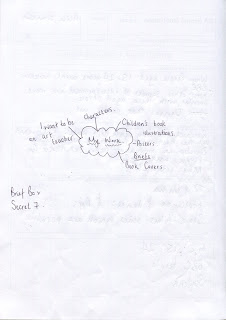In this session we were taught all about the creative industries and industry sectors that are available. We were given a brief that we have to work in groups to produce a business proposal, so this information is definitely very important for us to know.
Industry Sectors
- Goods producing segment of economy
- An area where businesses share the same product
- An industry sharing common characteristics
- 4 key sectors
Primary Sector
Primary sectors harvest goods that are natural
Secondary Sector
The secondary sector of economy manufactured goods
Tertiary Sector
Service industry, retail and wholesalers, transportation
Quaternary Sector
Government, culture, education, research - intellectual activities
Sectors are there to look, plan, predict where opportunities are in the industry.
The Service Industries
An industry made up of companies/organisations which make money by providing intangible things or services.
Public Sector
Police, military, public roads, transport, primary/secondary education.
- Free on the point of delivery
- Don't pay directly, you pay via taxes etc.
- Benefit to society
- support social structures
- Equal opportunity etc.
Private Sector
Run by companies for profit
- Money is privately generated and stays private
- Not state controlled
- It's delivered for profit
Third Sector
Voluntary or not-for-profit sectors
- exist between business and government
- there to generate money but not for profit
Service Industries
- Creatibe
- Education
- Hotels and Restaurants
- Financial and Business
- Public admin and Defence
- Real Estate
- Tourism
- Transport and Storage
- 213,500 designers are generating £13.8 billion in annual turnover
- 67% designers are under 40
- 31% of design businesses are in London
- 59% of design companies employ fewer than 5 people
- Over 58% of UK design businesses work in communication, digital and multimedia design.
There are 3 main types of companies working in the creative industries
- Design studios
- In house creative teams
- Freelance practitioners
Creative Industries
- The Design Council
- The Arts Council
- The British Council
- Creative England
- Creative & Cultural Skills
- Creative Coalition
- Campaign
- Young Creative Networks
- The AOI
- D&AD
























